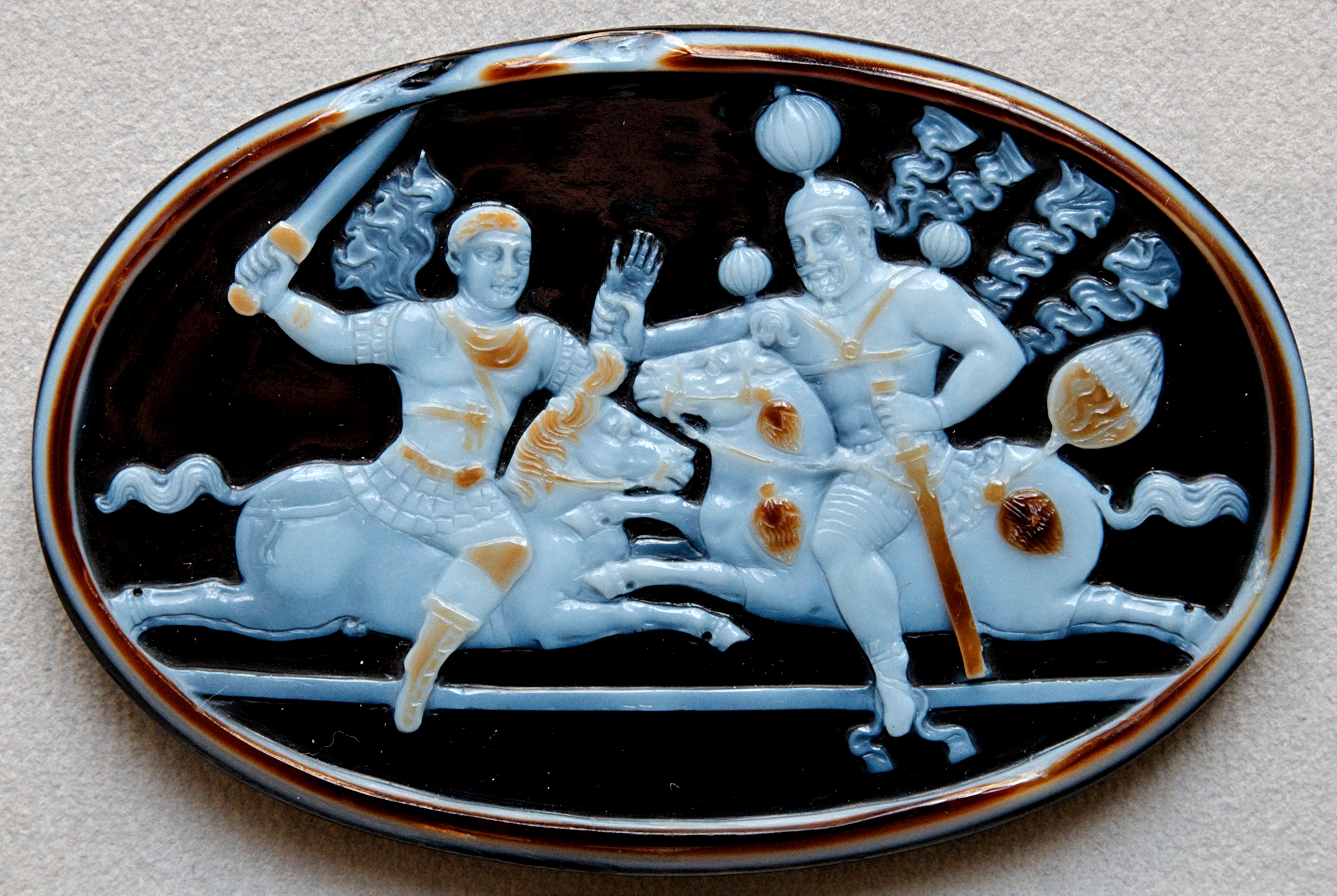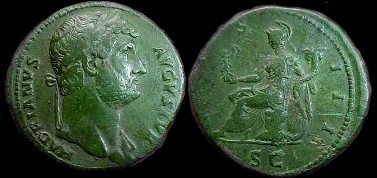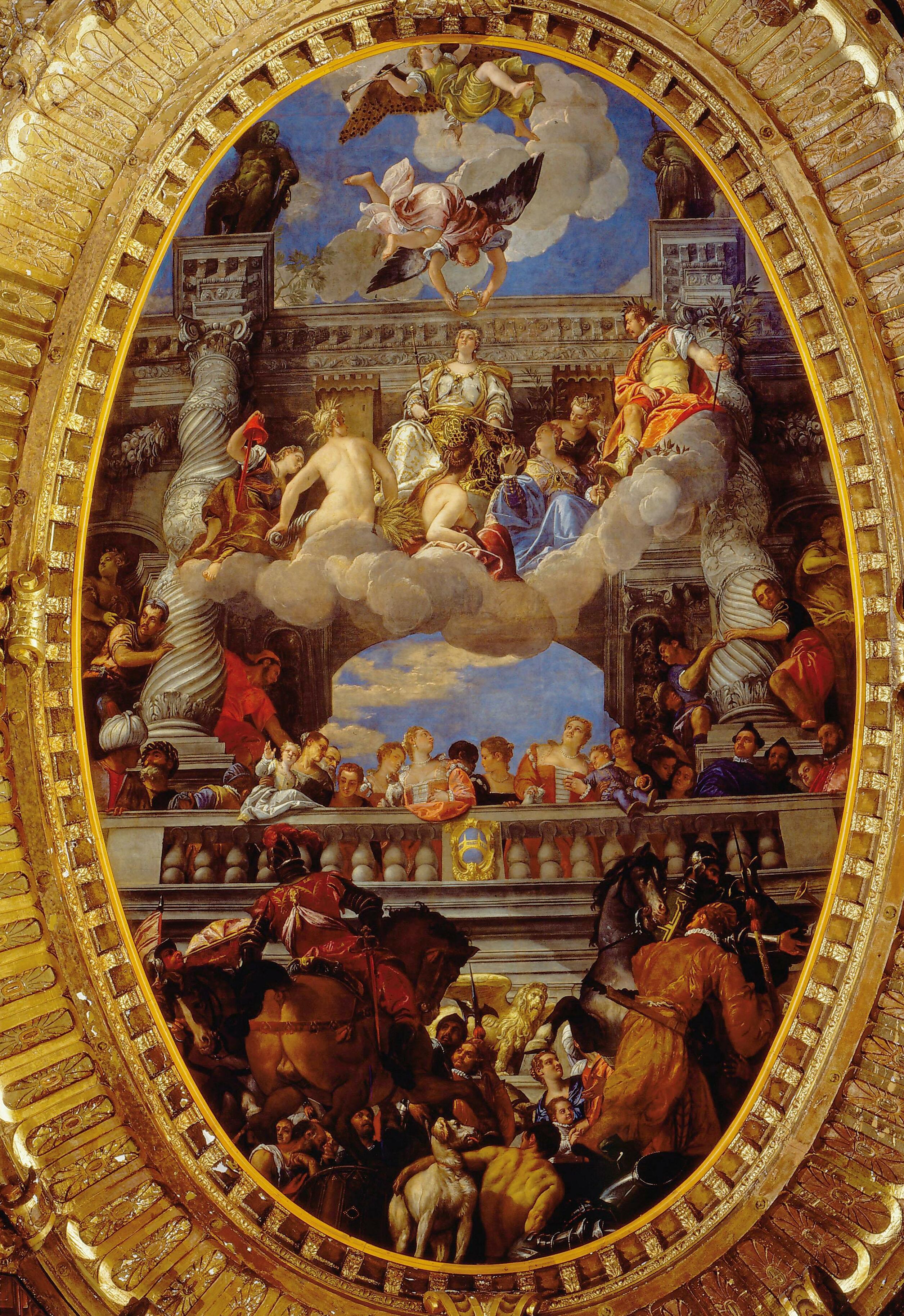|
Mariniana
Egnatia Mariniana was probably the wife of Roman Emperor Valerian and mother of Emperor Gallienus. Life Several coins bearing the legend DIVAE MARINIANAE date back to the beginning of the reign of Valerian and Gallienus. She died before Valerian's ascension to the throne in 253. Previously it had been assumed that Egnatius Victor Marinianus, legatus, at different times, of Arabia Petraea and Moesia Superior, was the father of Mariniana. More recently however, it has been postulated that she was the daughter of Lucius Egnatius Victor, suffect consul before 207, and therefore Egnatius Victor Marinianus' sister.Mennen, pg. 102 References Sources * Mennen, Inge, ''Power and Status in the Roman Empire, AD 193-284'' (2011) 3rd-century Roman women Deified ancient Roman women Augustae Wives of Roman emperors Mothers of Roman emperors Mariniana Valerian dynasty {{AncientRome-bio-stub ... [...More Info...] [...Related Items...] OR: [Wikipedia] [Google] [Baidu] |
Gallienus
Publius Licinius Egnatius Gallienus (; – September 268) was Roman emperor with his father Valerian from 253 to 260 and alone from 260 to 268. He ruled during the Crisis of the Third Century that nearly caused the collapse of the empire. He won numerous military victories against usurpers and Germanic tribes, but was unable to prevent the secession of important provinces. His 15-year reign was the longest in half a century. Born into a wealthy and traditional senatorial family, Gallienus was the son of Valerian and Mariniana. Valerian became Emperor in September 253 and had the Roman Senate elevate Gallienus to the rank of ''Augustus''. Valerian divided the empire between him and his son, with Valerian ruling the east and his son the west. Gallienus defeated the usurper Ingenuus in 258 and destroyed an Alemanni army at Mediolanum in 259. The defeat and capture of Valerian at Edessa in 260 by the Sasanian Empire threw the Roman Empire into the chaos of civil war. Contr ... [...More Info...] [...Related Items...] OR: [Wikipedia] [Google] [Baidu] |
Valerian (emperor)
Valerian ( ; ; – 260 or 264) was Roman emperor from 253 to spring 260 AD. Valerian is known as the first Roman emperor to have been taken captive in battle, captured by the Sassanid Empire, Persian emperor Shapur I after the Battle of Edessa, causing shock and instability throughout the Roman Empire. The unprecedented event and his unknown fate generated a variety of different reactions and "new narratives about the Roman Empire in diverse contexts". Biography Origins and rise to power Unlike many of the would-be emperors and rebels who vied for imperial power during the Crisis of the Third Century, Valerian was of a noble and traditional Roman Senate, senatorial family. Details of his early life are sparse, except for his marriage to Egnatia Mariniana, with whom he had two sons: Publius Licinius Egnatius Gallienus (his co-emperor and later successor) and Licinius Valerianus (brother of Gallienus), Licinius Valerianus. Valerian was Roman consul, consul for the first time eit ... [...More Info...] [...Related Items...] OR: [Wikipedia] [Google] [Baidu] |
Lucius Egnatius Victor
(Lucius) Egnatius Victor (fl. 3rd century) was a Roman military officer and senator who was appointed suffect consul for an uncertain ''nundinium'' prior to 207. Biography Egnatius Victor was a member of the second and third century ''gens Egnatia'', which most likely originated in Etruria, although Numidian and Bithynian origins have also been suggested. It has been conjectured that he was the son of Aulus Egnatius Priscillianus, a Roman philosopher. Before AD 207, Egnatius Victor was appointed suffect consul, since in 207 he was the ''Legatus Augusti pro praetore'' in Pannonia Superior, which was a proconsular posting. Egnatius Victor possibly married a daughter of Quintus Hedius Rufus Lollianus Gentianus, and he was probably the father of Lucius Egnatius Victor Lollianus (suffect consul around 225/230) and Egnatia Mariniana, who became the wife of the future emperor Valerian and the mother of the emperor Gallienus Publius Licinius Egnatius Gallienus (; – September 26 ... [...More Info...] [...Related Items...] OR: [Wikipedia] [Google] [Baidu] |
Egnatius Victor Marinianus
Egnatius Victor Marinianus (fl. 3rd century) was a Roman military officer and senator. Biography Egnatius Marinianus was a member of the third century ''gens Egnatia'', and it has been speculated that he was the son of Lucius Egnatius Victor, ''consul suffectus'' before 207. Sometime before 230 he was the '' legatus Augusti pro praetore'' (or imperial governor) of the province of Arabia Petraea. He was eventually appointed ''consul suffectus'' in a '' nundinium'' around 230. Then sometime after this he again filled the office of ''legatus Augusti pro praetore'', this time in Moesia Superior. Previously it had been speculated that Egnatius Marinianus was the father of Egnatia Mariniana, who was the wife of Valerian and mother of Gallienus Publius Licinius Egnatius Gallienus (; – September 268) was Roman emperor with his father Valerian from 253 to 260 and alone from 260 to 268. He ruled during the Crisis of the Third Century that nearly caused the collapse of the empire ... [...More Info...] [...Related Items...] OR: [Wikipedia] [Google] [Baidu] |
Sestertius
The ''sestertius'' (: ''sestertii'') or sesterce (: sesterces) was an Ancient Rome, ancient Roman Roman currency, coin. During the Roman Republic it was a small, silver coin issued only on rare occasions. During the Roman Empire it was a large brass coin. The name ''sestertius'' means "two and one half", referring to its nominal value of two and a half ''as (Roman coin), asses'' (a bronze Roman coin, singular ''as''), a value that was useful for commerce because it was one quarter of a denarius, a coin worth ten ''asses''. The name is derived from ''semis'', "half" and ''tertius'', "third", in which "third" refers to the third ''as'': the sestertius was worth two full ''asses'' and half of a third. English-language sources routinely use the original Latin form ''sestertius'', plural ''sestertii''; but older literature frequently uses ''sesterce'', plural ''sesterces'', ''terce'' being the English equivalent of ''tertius''. A modern shorthand for values in sestertii is IIS (Un ... [...More Info...] [...Related Items...] OR: [Wikipedia] [Google] [Baidu] |
Legatus
A legate (Latin: , ) was a high-ranking Roman military officer in the Roman army, equivalent to a high-ranking general officer of modern times. Initially used to delegate power, the term became formalised under Augustus as the officer in command of a Roman legion. From the times of the Roman Republic, legates received large shares of the military's rewards at the end of a successful campaign. This made the position a lucrative one, so it could often attract even distinguished consuls or other high-ranking political figures within Roman politics (e.g., the consul Lucius Julius Caesar volunteered late in the Gallic Wars as a legate under his first cousin, Gaius Julius Caesar). Diplomats and envoys sent by Rome were also given the title of legate. History Roman Republic The rank of legate existed as early as the Samnite Wars, but it was not until 190 BC that it started to be standardized, meant to better manage the higher numbers of soldiers the Second Punic War had forced t ... [...More Info...] [...Related Items...] OR: [Wikipedia] [Google] [Baidu] |
Arabia Petraea
Arabia Petraea or Petrea, also known as Rome's Arabian Province or simply Arabia, was a frontier Roman province, province of the Roman Empire beginning in the 2nd century. It consisted of the former Nabataean Kingdom in the southern Levant, the Sinai Peninsula, and the northwestern Arabian Peninsula. Its capital was Petra. It was bordered on the north by Syria (Roman province), Syria, on the west by Judea (Roman province), Judaea (renamed Syria Palaestina in AD 135) and Roman Egypt, Egypt, and on the south and east by the rest of Arabia, known as Arabia Deserta and Arabia Felix. The territory was annexed by Emperor Trajan, like many other eastern frontier provinces of the Roman Empire, but held onto, unlike Roman Armenia, Armenia, Mesopotamia (Roman province), Mesopotamia and Assyria (Roman province), Assyria, well after Trajan's rule, its desert frontier being called the Limes Arabicus. It produced the Emperor Philip the Arab, Philippus, who was born around 204. As a frontier ... [...More Info...] [...Related Items...] OR: [Wikipedia] [Google] [Baidu] |
Moesia Superior
Moesia (; Latin: ''Moesia''; ) was an ancient region and later Roman province situated in the Balkans south of the Danube River. As a Roman domain Moesia was administered at first by the governor of Noricum as 'Civitates of Moesia and Triballia'. It included most of the territory of modern eastern Serbia, Kosovo, north-eastern Albania, northern parts of North Macedonia (Moesia Superior), Northern Bulgaria, Romanian Dobruja and small parts of Southern Ukraine (Moesia Inferior). Geography In ancient geographical sources, Moesia was bounded to the south by the Haemus (Balkan Mountains) and Scardus (Šar) mountains, to the west by the Drinus (Drina) river, on the north by the Donaris (Danube) and on the east by the Euxine (Black Sea). History The region of Moesia was inhabited chiefly by Thracian, Illyrian, and Thraco-Illyrian peoples. The name of the region comes from Moesi, the Latin name of a Thracian tribe who lived there before the Roman conquest. Parts of Moesi ... [...More Info...] [...Related Items...] OR: [Wikipedia] [Google] [Baidu] |
Roman Consul
The consuls were the highest elected public officials of the Roman Republic ( to 27 BC). Romans considered the consulship the second-highest level of the ''cursus honorum''an ascending sequence of public offices to which politicians aspiredafter that of the Roman censor, censor, which was reserved for former consuls. Each year, the Centuriate Assembly elected two consuls to serve jointly for a one-year term. The consuls alternated each month holding ''fasces'' (taking turns leading) when both were in Rome. A consul's ''imperium'' (military power) extended over Rome and all its Roman provinces, provinces. Having two consuls created a check on the power of any one individual, in accordance with the republican belief that the powers of the former King of Rome, kings of Rome should be spread out into multiple offices. To that end, each consul could veto the actions of the other consul. After the establishment of the Roman Empire, Empire (27 BC), the consuls became mere symboli ... [...More Info...] [...Related Items...] OR: [Wikipedia] [Google] [Baidu] |
3rd-century Roman Women
The 3rd century was the period from AD 201 (represented by the Roman numerals CCI) to AD 300 (CCC) in accordance with the Julian calendar. In this century, the Roman Empire saw a crisis, starting with the assassination of the Roman Emperor Severus Alexander in 235, plunging the empire into a period of economic troubles, barbarian incursions, political upheavals, civil wars, and the split of the Roman Empire through the Gallic Empire in the west and the Palmyrene Empire in the east, which all together threatened to destroy the Roman Empire in its entirety, but the reconquests of the seceded territories by Emperor Aurelian and the stabilization period under Emperor Diocletian due to the administrative strengthening of the empire caused an end to the crisis by 284. This crisis would also mark the beginning of Late Antiquity. While in North Africa, Roman rule continued with growing Christian influence, particularly in the region of Carthage. In Persia, the Parthian Empire wa ... [...More Info...] [...Related Items...] OR: [Wikipedia] [Google] [Baidu] |
Deified Ancient Roman Women
Apotheosis (, ), also called divinization or deification (), is the glorification of a subject to divine levels and, commonly, the treatment of a human being, any other living thing, or an abstract idea in the likeness of a deity. The original sense of apotheosis relates to religion and is the subject of many works of art. Figuratively "apotheosis" may be used in almost any context for "the deification, glorification, or exaltation of a principle, practice, etc.", so normally attached to an abstraction of some sort. In religion, apotheosis was a feature of many religions in the ancient world, and some that are active today. It requires a belief that there is a possibility of newly created gods, so a polytheistic belief system. The major modern religions of Christianity, Islam, and Judaism do not allow for this, though many recognise minor sacred categories such as saints (created by a process called canonization). In Christian theology there is a concept of the faithful bec ... [...More Info...] [...Related Items...] OR: [Wikipedia] [Google] [Baidu] |




